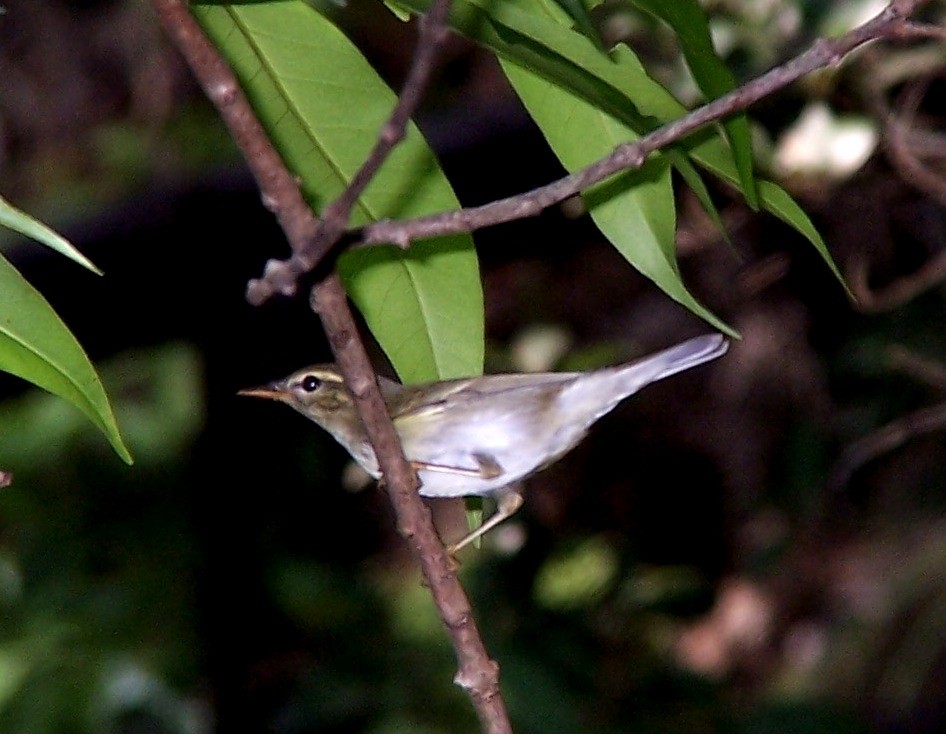Arctic Warbler
A species of Chiffchaffs And Allies, Also known as Arctic Leaf Warbler Scientific name : Phylloscopus borealis Genus : Chiffchaffs And Allies
Arctic Warbler, A species of Chiffchaffs And Allies
Also known as:
Arctic Leaf Warbler
Botanical name: Phylloscopus borealis
Genus: Chiffchaffs And Allies
Content
Description People often ask General Info
 Photo By CharlesLam , used under CC-BY-SA-2.0 /Cropped and compressed from original
Photo By CharlesLam , used under CC-BY-SA-2.0 /Cropped and compressed from original Description
The arctic Warbler is a small, yellow-green warbler that breeds in the high latitudes of the Northern Hemisphere and winters in Southeast Asia. This energetic bird is known for its fast and high-pitched trill. It feeds on insects, spiders, and caterpillars. The Arctic Warbler's habitat includes boreal and temperate forests, as well as bogs and tundras. Its migration path is one of the longest of any warbler species, spanning continents. Despite its small size, the bird is a resilient traveler, and its unique song and long migration make it a standout species among warblers. 
Size
13 cm
Colors
Green
Gray
White
Life Expectancy
3.1 years
Nest Placement
Ground
Clutch Size
5 - 7 eggs
Feeding Habits
Arctic Warbler's diet consists predominantly of insects, foraged within shrubs and trees, 6 to 32 feet above ground or sometimes at water’s edge. It actively gleans prey such as flies, mayflies, and caterpillars, from leaf surfaces or air, occasionally resorting to ground foraging.
Habitat
Arctic Warbler typically inhabits boreal and subarctic regions, favoring brushy areas and dense scrublands. They breed in wetland-associated dwarf willow stands, shrub birch, and stunted white spruce environments, often near streams. These habitats feature patches of taller vegetation and meadows with varied plant life, such as sedges and arctic flowers. During migration, arctic Warbler adapts to a broad range of habitats, from lowland forests and mangroves to plantations and rainforests up to 4,000 feet in elevation in the Philippines.
Nest Behavior
Both sexes of arctic Warbler share the duty of building their domed nest. Nest building coincides with the spring thaw, followed by egg-laying. After eggs are laid, both parents participate in rearing the young, which includes incubating the eggs and feeding the hatchlings.
Nest Characteristics
Arctic Warbler's nest is ground-based, nestled in grass or moss near willows or shrubs. Its dome-shaped structure is constructed from grasses, mosses, leaves, with fine grass and hair lining the interior. The side hole leads to a nest cup, measuring approximately 4.7 inches in width, 4 inches in height, with a 2.5 by 2 inches cup.
Dite type
Insectivorous
People often ask
General Info
Feeding Habits
Bird food type
Bird Feeder Type

Platform
Behavior
Arctic Warblers exhibit a notable dedication to territory and mating rituals. Upon arrival at Alaskan breeding grounds, males promptly assert territories by singing and foraging during the lengthy daylight hours. Aggressive interactions may ensue between males involving visual displays like feather fluffing and wing flicking to delineate turf. Females show receptiveness to males through a distinctive wing flapping. Courtship includes the male presenting caterpillars to the female, establishing a bond that carries over to shared parenting responsibilities post-hatching. Outside the breeding season, arctic Warblers demonstrate flexibility in habitat use, and remain solitary without evident territorial behavior in wintering grounds.
Species Status
Not globally threatened.
Scientific Classification
Phylum
Chordates Class
Birds Order
Perching birds Family
Phylloscopidae Genus
Chiffchaffs And Allies Species
Arctic Warbler